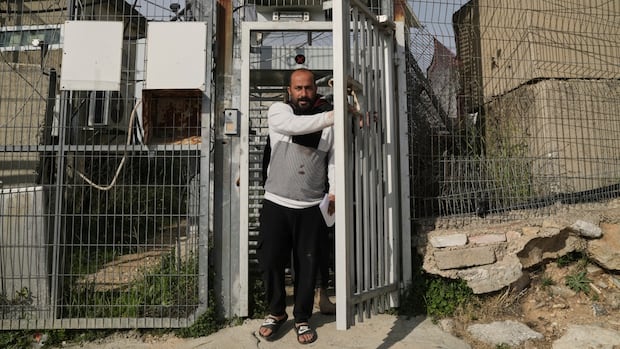
Diana, Princess of Wales (Image: PA)
The allure of Royal families captivates many, from the British monarchy to dynasties across the globe, spanning both modern times and ancient history. The fascination often peaks when it comes to the demise of these blue-blooded figures.
Throughout the ages, the untimely deaths of royals have frequently been shrouded in conspiracy theories, with a public eager to uncover whether these were mere accidents or the result of clandestine plots.
From enigmatic circumstances to dubious intentions, the passing of royalty has perennially gripped the masses, feeding into our collective intrigue about the interplay of power, privilege, and the hidden narratives behind the crown. The tragic fate of Princess Diana in 1997 and the brutal assassination of Tsar Nicholas II along with his family in 1918 are among the tales that have stirred shock and speculation alike.
Specialists at Affordable Urns have delved into some of these infamous cases, suggesting that the enticement of Royal conspiracies satisfies our innate desire for mystery and a penchant for dramatic revelations. “Royal figures live in a world of mystery and power, and when their deaths don’t add up, people are quick to fill in the gaps,” they commented. “We’re fascinated by the idea that even the most powerful lives might end in secrecy.”

Diana, Princess of Wales (Image: Stefan Rousseau/PA)
Princess Diana (1961 – 1997)
The prevailing narrative, deeply etched into public consciousness, is that Princess Diana died in a Paris car crash on August 31, 1997. Official investigations concluded that the fatal collision was primarily due to chauffeur Henri Paul’s intoxication and his desperate bid to evade the relentless paparazzi chase.
But for nearly three decades since that earth-shattering moment, conspiracy theories have swirled tenaciously. A contingent of sceptics propose that Diana’s untimely end was the result of a calculated hit, ordered by the royals or other clandestine entities, prompted by either her dalliance with Dodi Fayed or her burgeoning popularity, which began outshining the traditional monarchy.
Proponents of this perspective find substantiation in Diana’s own prophetic fears about her wellbeing in the time leading to the tragedy. Nonetheless, such speculative narratives were dismissed by the findings of formal probes, encompassing a French judicial inquiry and a British inquest that returned a verdict citing “unlawful killing” attributable to Henri Paul and the fleet of pursuing vehicles.
Sheikh Rashid bin Mohammed Al Maktoum (1981 – 2015)
Reports from established authorities depict the sudden death of Sheikh Rashid, Dubai’s ruler’s eldest scion, as a consequence of cardiac arrest at the tender age of 33, with natural causes underscoring his unexpected departure.
However, there were whispers that Sheikh Rashid’s demise was not due to a heart attack, but potentially tied to familial disputes or political power struggles within the UAE. His past involvement in scandals and his withdrawal from public life have only fuelled these rumours of a death shrouded in mystery.
Prince Friso of the Netherlands (1968 – 2013)
The prince is officially reported to have died after being in a coma for over a year following a skiing accident in Austria. He was caught in an avalanche and, despite rescue efforts, he suffered severe brain damage due to oxygen deprivation.
While the official narrative points to a tragic mishap, some theories hint at foul play, especially considering his wife’s controversial past and his renouncement of his claim to the throne. The intrigue deepened when reports about the delay in his rescue emerged, raising questions about whether this was more than just a regrettable skiing incident.

The Family of Tsar Nicholas II of Russia, 1910s. The Tsar (1868-1918), Tsarina Alexandra (1872-1918) and their children Grand Duchesses Olga (1895-1918), Tatiana (1897-1918), Maria (1899-1918), Anastasia (1901-1918) and the Tsarevich Alexei (1904-1918) (Image: Fine Art Images/Heritage Images/Getty Images)
Tsar Nicholas II of Russia (1868 – 1918)
The last emperor of Russia, is officially said to have been executed by Bolsheviks along with his family during the Russian Revolution in 1918. They were shot and killed in a basement in Ekaterinburg, marking the end of the Romanov dynasty.
The enduring enigma surrounding the demise of Russia’s Romanovs continues to captivate the world. Myths and speculations of surviving Royal family members, particularly Anastasia or Alexei, have abounded despite official accounts of their execution.
Claimants have surfaced over the years pretending ties to the Romanov lineage, casting doubt on whether all the remains were truly accounted for. While DNA tests have quashed many such rumours, the intrigue endures in collective consciousness.
King George V of the United Kingdom (1865 – 1936)
The passing of King George V was officially attributed to his prolonged battle with lung disease. Yet, five decades on in 1986, a sensational diary entry from Lord Dawson, the King’s physician, exposed an intentional hastening of his death by morphine and cocaine injection so that he would pass away before midnight.

King George V and Queen Mary aboard the Medina on their way to Delhi in 1911 (Image: PA)
This deed – purportedly to align the King’s passing with morning newspapers’ deadlines rather than “the less appropriate evening journals” – ignited scandal and provoked questions regarding the orchestration of royal demises for public image preservation.
Affordable Urns experts concluded: “When a royal figure dies under uncertain circumstances, it taps into our need to make sense of the unknown. Conspiracy theories help fill the gaps left by secrecy, offering explanations that resonate with the intrigue surrounding royal life.”
They added that these conspiracies also underscore the inevitable reality that even the most powerful individuals are not immune to the forces of life and death, deepening the allure of such stories.











